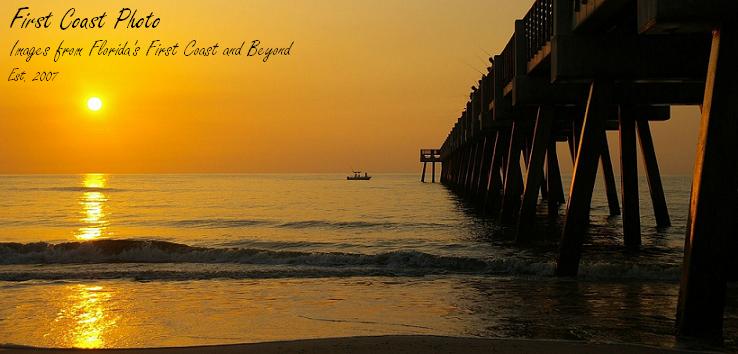Our main destination in Fernandina was Fort Clinch, a 19th Century fortification built at the very northernmost tip of Florida - just a few hundred feet of the Cumberland Inlet separate Florida from Georgia here. Because of this relatively narrow gap and the natural deep harbor fort in Fernandina, this location was a prime stategic placement for a fortification.
.JPG)
The south wall of the fort, facing inland, with the fort road winding through
the glacis towards the entrance.
Construction on the fort began in 1847. It was named for General Duncan Lamont Clinch, an American officer during the Second Seminole War fought in Florida a few decades earlier. Since America faced no great naval threat after 1847 and piracy had been all but wiped out (certainly it was so in Fernandina by then) there was no great need to hurry the construction of the fort, and so by the time the American Civil War erupted in 1861 the fort was only partially completed: two bastions and 1/3 of the outer brick wall, though the main earthen ramparts. Not a single cannon was in place. The guardhouse and prison were finished, and a wooden kitchen, storehouse, and lumber shed were in various stages of completion.
.JPG) A Confederate sentry standing guard at the main entry, or sallie port.
A Confederate sentry standing guard at the main entry, or sallie port.
With no true garrison present at the start of the Civil War, the Confederates simply took control with no resistance. The Rebels didn't attempt to finish the fort, but they did establish some gun batteries in the fort and other places on this island and across the inlet on Cumberland island, Georgia. With resources stretched thin, however, the Confederates decided in 1862 that they couldn't cover every single island outpost and abandoned most of them, allowing the Union to retake the fort - again without a shot fired - in March 1862. The Union, led by the 1st New York Engineers, then continued to work on the fort and by 1867 it was nearly completed (the war ended in 1865) when the army decided to deactivate the fort and construction was halted.
.JPG) A view of the fort's interior showing one of the completed barracks. The flag flying is an early Confederate flag from Florida that reads: "Hurrah for Florida! Let us alone!"
A view of the fort's interior showing one of the completed barracks. The flag flying is an early Confederate flag from Florida that reads: "Hurrah for Florida! Let us alone!"
The fort was reactivated for the Spanish American war in 1898 but while a mount was built to hold a modern gun, it was never put in place and the fort was again abandoned in September of that year. The army sold the fort and land to private buyers in 1926 and in 1935 the state of Florida bought the complex for preservation and outdoor recration. The Civilian Conservation Corps (a byproduct of the "New Deal" from President Franklin D. Roosevelt to pull America out of the Great Depression) developed the property into Fort Clinch State Park, with the fort, nature trails, camping, beach access, and wildlife protection.
.JPG) Confederate artillerists fire a Civil War era 3 inch Ordinance Rifle. (3 inch refers to the size of the shell fired.) This would not be used in a fort, but none of the larger guns in the fort are opperational, so they use this smaller gun for demonstration purposes.
Confederate artillerists fire a Civil War era 3 inch Ordinance Rifle. (3 inch refers to the size of the shell fired.) This would not be used in a fort, but none of the larger guns in the fort are opperational, so they use this smaller gun for demonstration purposes.
.JPG)
Another view of the fort's internior, showing a building that is used for storage and staff offices. The large cannon on the right of the building are 10-inch Rodman Seacoast guns, a common Civil War-era fort cannon. More about the Rodmans and closeup photos Saturday.
.JPG)
.JPG)
.JPG)
.JPG) Another view of the fort's internior, showing a building that is used for storage and staff offices. The large cannon on the right of the building are 10-inch Rodman Seacoast guns, a common Civil War-era fort cannon. More about the Rodmans and closeup photos Saturday.
Another view of the fort's internior, showing a building that is used for storage and staff offices. The large cannon on the right of the building are 10-inch Rodman Seacoast guns, a common Civil War-era fort cannon. More about the Rodmans and closeup photos Saturday.
.JPG)


No comments:
Post a Comment